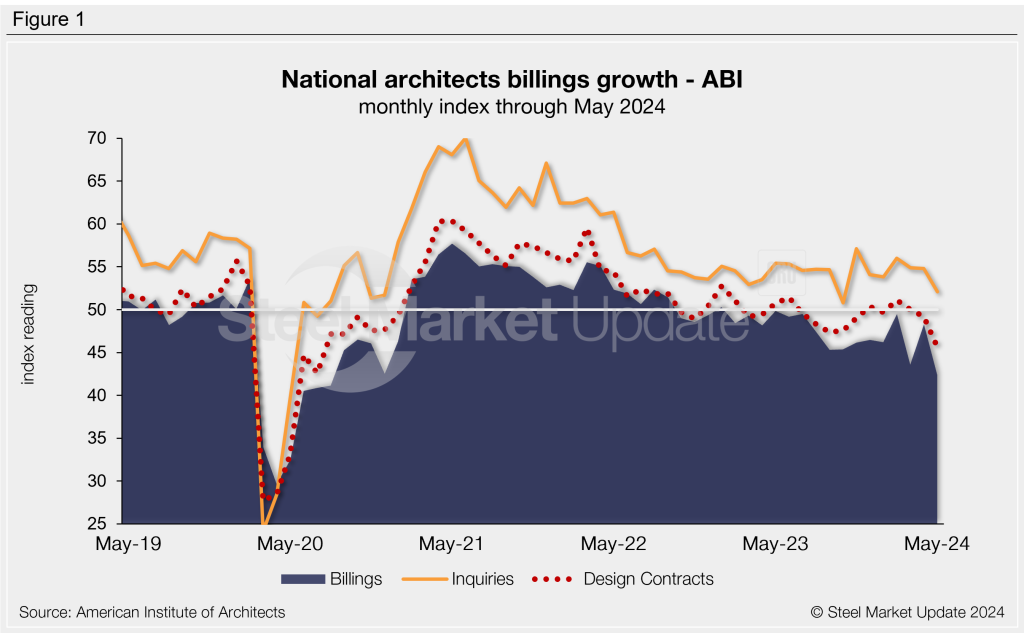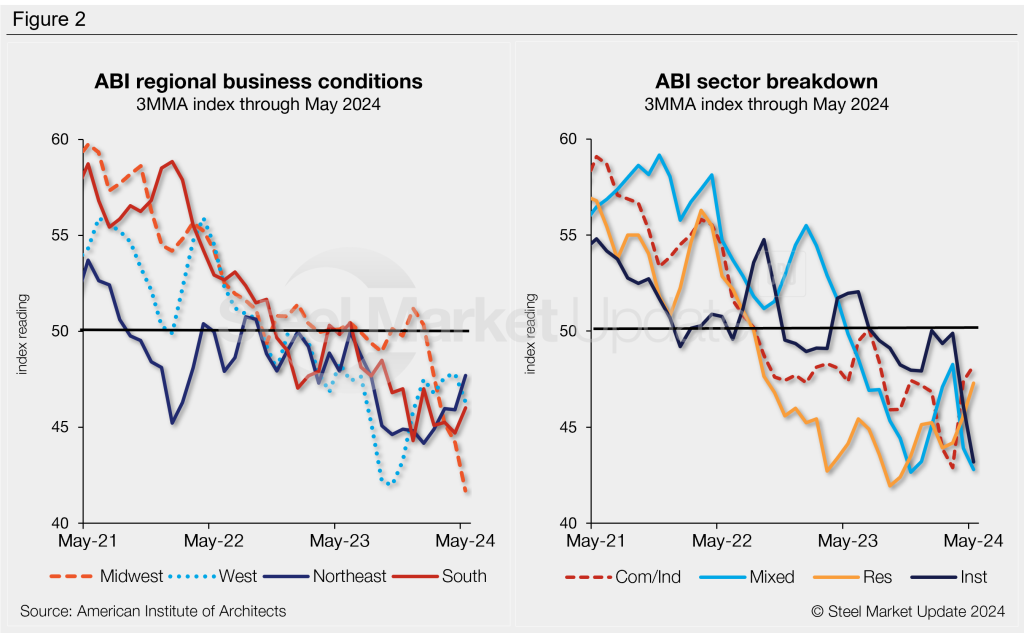Economy

Architecture Billings Index tumbles in May
Written by Brett Linton
June 26, 2024
The Architecture Billings Index (ABI) declined in May to its lowest level in nearly four years, according to the American Institute of Architects (AIA) and Deltek. The Index continues to indicate weak business conditions amongst architecture firms.
The May ABI score of 42.4 marks the 16th consecutive month the index has been in contraction territory. This time last year the index was 49.9, while two years prior it stood at a positive 52.3.
The ABI is a leading economic indicator for nonresidential construction activity, projecting business conditions approximately 9-12 months into the future. Any score above 50 indicates an increase in billings, while a score below 50 indicates a decrease.

“The decline in the May ABI score continues a year and a half of weakness in design billings at US architecture firms,” said AIA chief economist Kermit Baker.
“Over the past nine months, volatility has increased, and scores have softened more significantly, with the May score the weakest reported since the end of the pandemic recession,” he added.
The project inquiries index eased 2.7 points to 52.1 in May, a seven-month low. The design contracts index fell 3.6 points to 49.2, the lowest measure since July 2020.
All regional indices continued to indicate contraction through May. The Northeastern and Southern region indices saw a slight increase in May, while the Midwestern and Western indices declined. Conditions remained weakest at firms located in the Midwest.
Business condition changes varied by sector in May, though declining conditions remained across the board. The multifamily residential and commercial/industrial sectors experienced growth from April to May, while the institutional and mixed practice sectors declined and remained the weakest areas.


Brett Linton
Read more from Brett LintonLatest in Economy

New York state manufacturing index drops again in April
Firms were pessimistic, with the future general business conditions index falling to its second lowest reading in the more than 20-year history of the survey

Construction adds 13,000 jobs in March
The construction sector added 13,000 jobs, seasonally adjusted, in March, but tariffs could undermine the industry.

Supply chains, end-users brace for impact from tariffs
Supply chains are working through what the tariffs mean for them

ISM: Manufacturing expansion loses steam after two months of growth
US manufacturing activity slowed in March after two straight months of expansion, according to supply executives contributing to the Institute for Supply Management (ISM)’s latest report.

Chicago Business Barometer rose to 16-month high in March
The Chicago Business Barometer increased for the third-consecutive month in March. Despite this, it still reflects contracting business conditions, as it has since December 2023.
